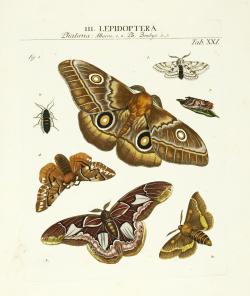Genera Insectorum Linnaei et Fabricii iconibus illustrata.
Eur 6,500 / USD 7,200
The price shown on each item does not include V.A.T (Value Added Tax). As a result of the recent EU legislation we are required to charge our EU customers the percentage of V.A.T. charged by the customer’s country of residence, unless they possess a V.A.T. registration number. Postage Additional.
Vitoduri Helvetorum, H. Steiner et Socios, 1789. 4to (267 x 220mm). pp. viii, 86, (4), with 1 hand-coloured engraved title-vignette and 37 (36 hand-coloured) engraved plates and 1 engraving in the text. Contemporary calf, spine in 6 compartments with black gilt lettered label.
the beautifully handcoloured plates were drawn and engraved by the famous Swiss artist J.R. Schellenberg
A very fine copy of one of the most attractive Swiss publications on entomology. First and only edition, of which the beautifully handcoloured plates were drawn and engraved by the famous Swiss artist J.R. Schellenberg, being an entomologist himself. He illustrated a number of botanical and entomological works and became most famous for his elaborate drawings showing the smallest details. The author wrote the following about him: "Eben dieser Schellenberg hat ... eine erstaunliche Menge von Insecten nach der Natur gezeichnet und gemahlt ... Richtigkeit der Zeichnung, Leben und das herrlichste Colorit scheinen da mit einander um die Palme streiten zu wollen. Auch die vielen in Kupfer gestochene Insecten-Abbildungen, die wir von ihm haben, zeugen von seiner Kunst, ...". Auch in neuer Zeit werden immer wieder Präzision, Natürlichkeit und Schönheit der Schellenbergschen Insektenbilder hervorgehoben... (Thanner p. 144). The work describes several insects from New Holland, see Musgrave "Bibliography of Australian entomology" page 272. The colouring of the plates is remarkable.
Horn & Schenkling 18262; Nissen ZBI, 3462, see also B. Thanner, H.K. Schmutz & A. Geus. Johannes Rudolf Schellenberg. Der Künstler und die naturwissenschaftliche Illustration im 18. Jahrhundert.












